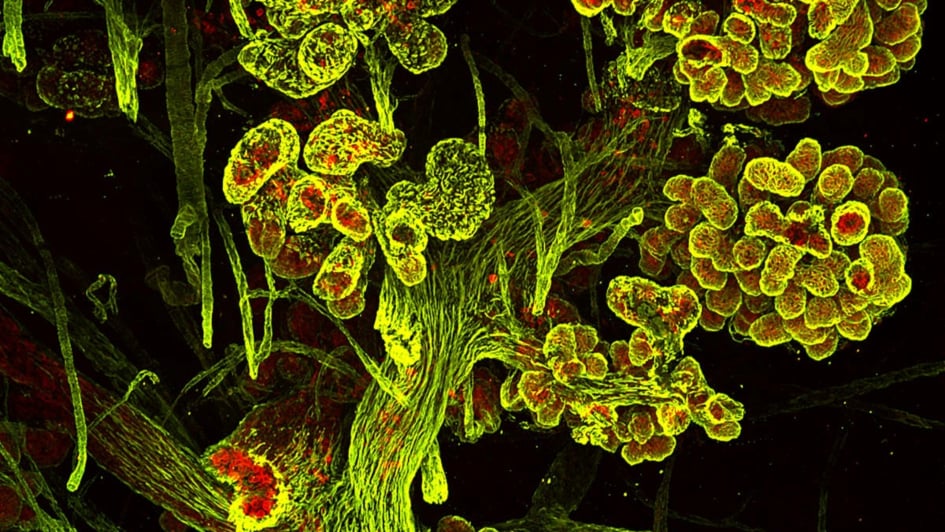
Image: 3D reconstruction of the human breast depicting lobules and ducts. Credit: Patrick Aouad, École Polytechnique Fédérale de Lausanne.
A new study led by scientists at The Institute of Cancer Research, London, has changed our understanding of invasive lobular breast cancer – and could increase the number of patients who access new treatments via lobular breast cancer specific clinical trials.
In the study, researchers showed that the diagnosis criteria for invasive lobular breast cancer – a type accounting for 10-15 per cent of breast cancer cases – should be expanded to include an extra subset of tumours that have not previously been included.
The study, which was published in a special issue of Cancers and funded by Breast Cancer Now, could impact the diagnosis of up to 10 per cent of patients with invasive lobular breast cancer, who currently may miss out on the chance to access clinical trials for new potential treatments.
Diagnosis criteria
Invasive lobular breast cancer, which develops in the lobes of the breast that produce milk, is usually diagnosed by the loss of a protein called E-cadherin. The loss of E-cadherin, which is involved in helping cells stick together, can be seen under a microscope in tumour samples that have been stained with a special dye.
In some patients, however, this protein is only lost in parts of the tumour, while other parts still contain it or show abnormal E-cadherin staining, making a definitive diagnosis of lobular breast cancer difficult.
Comprehensive DNA analysis supports expansion of diagnosis criteria
A team of researchers at the ICR sought to address whether these mixed tumours were similar enough genetically to the E-cadherin deficient tumours to be classed as the same type.
They used whole genome sequencing and methylation analysis – a measure of DNA activation – on two samples of the same tumour from nine individual patients: one from an area completely lacking E-cadherin and one where E-cadherin was still appearing on the surface of, or misplaced inside, cells.
The researchers revealed that the two samples from each patient were very similar in both their mutations and methylation profiles. Importantly, most ‘heterogenous’, or mixed, tumours also harboured mutations to the E-cadherin gene in both the apparently E-cadherin positive and negative areas.
Taken together, these findings suggest that tumour cells from both locations arose from common ancestor cancer cells in each patient, and both should be classified as invasive lobular breast cancers.
Broadening access to clinical trials
Study co-leader Dr Rachael Natrajan, Team Leader of the Functional Genomics Team in the Breast Cancer Now Toby Robins Research Centre at the ICR, said:
“Our study provides the first comprehensive genome-wide characterisation of invasive lobular breast cancers with varied E-cadherin expression and shows they should be considered as being similar to more classical E-cadherin deficient tumours. An important implication of this work is that women with these atypical tumours could still benefit from new therapies for invasive lobular breast cancer and should be offered the chance to take part in the same clinical trials.”
The phase II ROLo trial, for example, which is based on earlier work by Professor Chris Lord and his team at the ICR and was funded by Breast Cancer Now, excludes women whose tumours show partial or abnormal E-cadherin staining. The work from Dr Natrajan’s team suggests that these women should also be included in such trials.
Study co-leader, Dr Syed Haider, Leader of the Bioinformatics Group in the Breast Cancer Now Toby Robins Research Centre at the ICR, said:
“While whole genome sequencing studies are rapidly becoming more common, there remains an unmet need for detailed characterisation of tumours with specific molecular traits in rare subtypes of breast cancer. Here, we used a cost-effective technology to study the whole genomes of mixed invasive lobular breast cancers, showcasing the remarkable potential of big data in taking us a step closer to delivering precision medicine.”